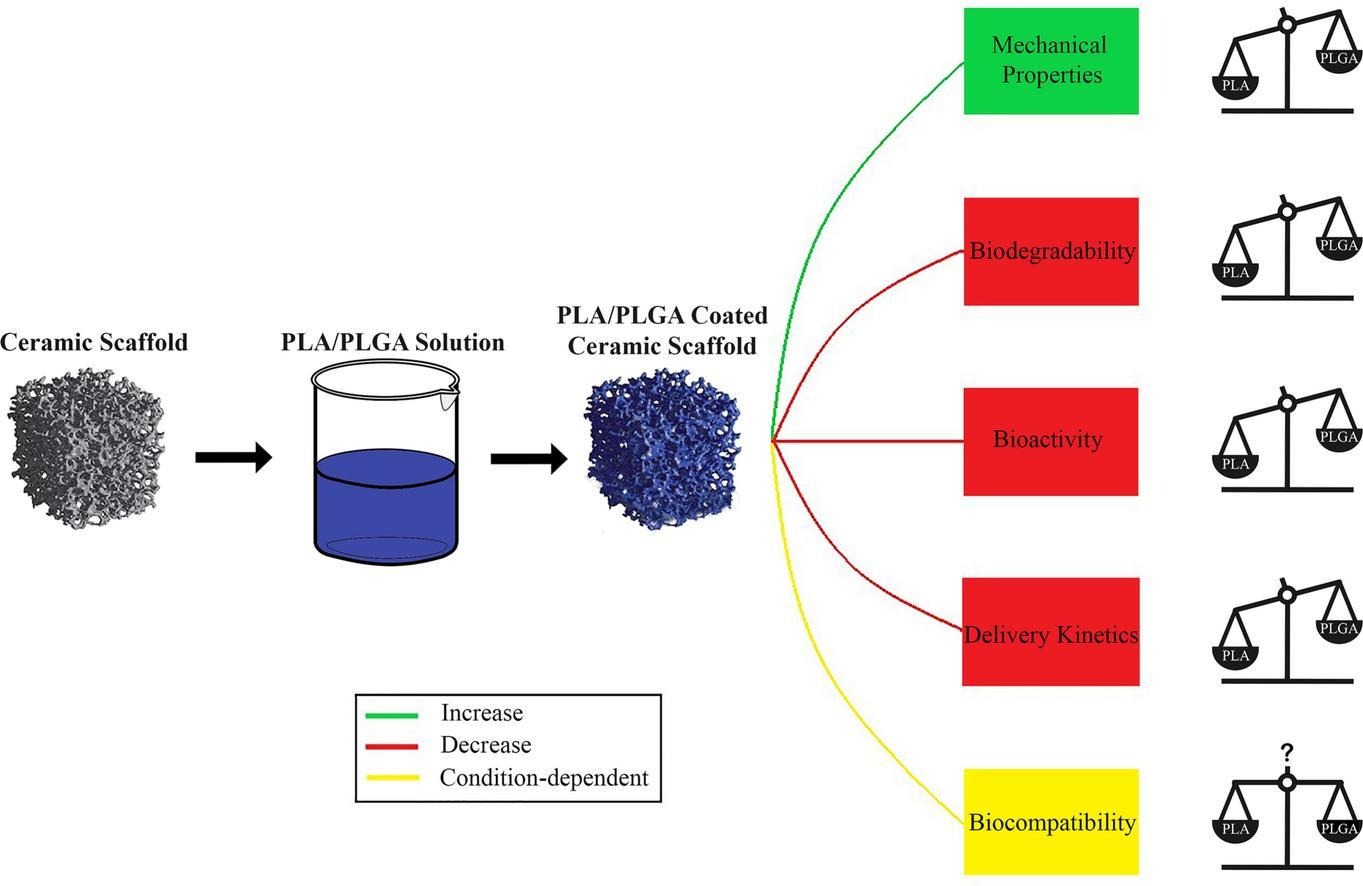Performance comparison of PLA- and PLGA-coated porous bioceramic scaffolds: Mechanical, biodegradability, bioactivity, delivery and biocompatibility assessments

Bioceramics, particularly calcium phosphates, bioactive glasses, and crystalline silicates, are a principal group of biomaterials employed for the regeneration of damaged tissues and therapeutic delivery. The development of ceramic tissue engineering scaffolds with an appropriate combination of mechanical and biological properties is still one of the key challenges in this field. In this regard, the deposition of polymeric coatings on the scaffolds is a simple and effective approach to reinforce their functions. Among different polymers, the influences of biodegradable aliphatic polyester coatings, especially polylactic acid (PLA) and poly(lactic-co-glycolic acid) (PLGA), over the performance of the scaffolds have been investigated in numerous research. This review paper provides a comprehensive comparison of PLA- and PLGA-coated bioceramic scaffolds which are mainly employed in bone tissue engineering. It is concluded that both the polymers enhance the mechanical behaviors of the scaffolds, but control their biodegradability, bioactivity, and delivery kinetics, where PLA acts almost more influentially than PLGA in comparison. However, the response of biocompatibility to this surface treatment is condition-dependent and requires case-by-case experiments to be determined accurately.
Amir Mohammad Maadani, Erfan Salahinejad, Performance comparison of PLA- and PLGA-coated porous bioceramic scaffolds: Mechanical, biodegradability, bioactivity, delivery and biocompatibility assessments, Journal of Controlled Release, Volume 351, 2022, Pages 1-7, ISSN 0168-3659, https://doi.org/10.1016/j.jconrel.2022.09.022

